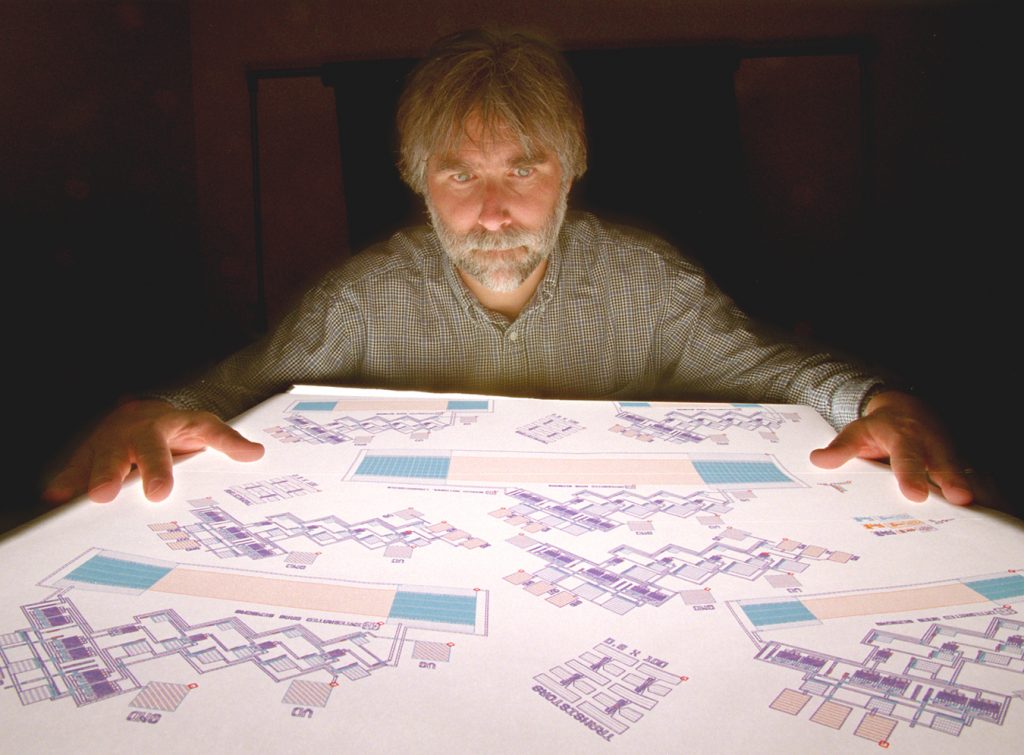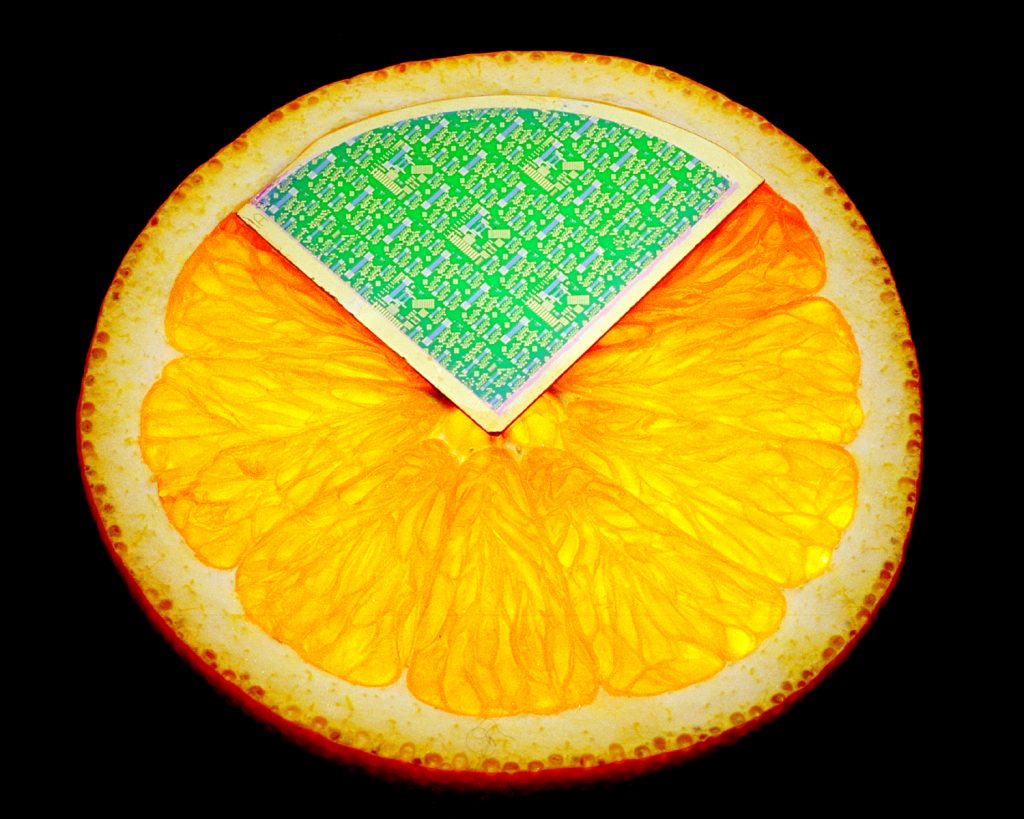
(Photo by Randy Montoya)
Download 300dpi JPEG image, ‘LabChip.jpg’, 1.3Mb (Media are welcome to download/publish this image with related news stories.)
ALBUQUERQUE, N.M. — Minute acoustic wave chemical sensors being developed at the U.S. Department of Energy’s Sandia National Laboratories will in the next two years be part of a hand-held chemical detection system, commonly called “chem lab on a chip,” and other integrated microsensor systems.
The microsensors, each about the size of a grain of rice, are similar to a “canary in a mine.” Like the canary, the sensors will be able to detect the presence of chemicals in the environment. But unlike the bird, they won’t sicken or die when exposed to the chemicals. They will simply alert people to the potential hazard.
Chem lab on a chip, formally called Chemlab™, is a Sandia initiative to build a hand-held “chemistry laboratory” the size of a palm-top computer. The acoustic wave sensor is one piece of equipment in that laboratory.
“What’s important here is that the chemical sensing transducer and microelectronics are integrated onto a single substrate,” says Steve Casalnuovo of Sandia who for the past three years has led a team of engineers and scientists in the effort to develop the integrated sensor. “Monolithic integration has a lot of advantages but the principal one for us is the small size of the resulting devices.”
They can be so small that an array of as many as four or five miniature sensors, each about two millimeters by 0.5 millimeters, by 0.5 millimeters and sensitive to different chemicals, could be built on a chip the size of a shirt button. Because the microsensors are so small, developers see many potential uses for them. Besides being incorporated into the chem lab on a chip, they may also eventually be used as mobile chemical detecting units that can be carried by robotic vehicles to the site of a chemical spill or worn by soldiers on a battlefield.
For the base material of the sensor the researchers chose gallium arsenide (GaAs) substrates instead of the usual quartz. GaAs, which is used for special purpose microelectronics, optoelectronics, and now for integrated sensors, is the key to integrating the sensors and the electronics.
Traditionally, says Greg Frye-Mason, who performs the chemical testing, acoustic wave chemical sensors are made from quartz. However, quartz can’t be integrated with microelectronics.
“Early on, we showed that GaAs made as sensitive a chemical detector as quartz and we knew that this approach had potential,” he says.

Download 300dpi JPEG image, ‘Micorang.jpg’, 1.6M (Media are welcome to download/publish this image with related news stories.)
Like quartz, GaAs is piezoelectric, which is necessary to produce the surface acoustic waves for chemical sensing. At the same time, it is the best available semiconductor for fabricating the high frequency microelectronics needed to operate the sensors.
Piezoelectric materials can convert electric signals to surface acoustic waves that travel much like waves on the ocean’s surface. To make a sensor, a thin selectively absorbing polymer layer is coated on the piezoelectric surface. When specific chemicals absorb into this layer, the acoustic waves travel more slowly. This change can be detected by the sensor microelectronics once the acoustic wave is converted back to an electric signal.
Sandia researchers foresee that someday the sensor electronics could possibly be connected to an alarm that would activate once the slowdown in the acoustic movement on the polymer layer is detected — serving as a warning that a certain chemical is in the vicinity.
Casalnuovo says a major milestone for the project was fabricating the acoustic sensors alongside the microelectronics without degrading the performance of either. Often when two different technologies are combined, hidden incompatibilities in the fabrication are uncovered. But in the case of these acoustic sensors, the team worked around the problem by using conventional microelectronics fabrication techniques.
Another important aspect of the research is developing new approaches to packaging the integrated sensors. The packages had to permit gases to flow over the sensor and still provide the electrical connections. To do this Sandia researchers developed a method of machining small gas flow channels into a lid that was attached directly to the GaAs substrate. A conventional integrated circuit package was then used for electrical connections. Future versions will have a microfabricated lid to reduce the volume of gas sampled.
Casalnuovo says the team is also investigating new types of acoustic wave devices that will provide more sensitive chemical detection in the future.
“We have adapted techniques developed for silicon micromachining at Sandia’s Microelectronics Development Laboratory to produce acoustic waves in extremely thin membranes of GaAs,” Casalnuovo says. “These work much like the surface acoustic wave sensors we now have but are potentially 100 times more sensitive to chemicals.”